|
Iran became a unique Islamic republic in 1979, when the monarchy was overthrown and religious clerics assumed political control under supreme leader Ayatollah Khomenei. The Iranian revolution put an end to the rule of the Shah, who had alienated powerful religious and political forces with a program of modernization and Westernization. Persia, as Iran was known before 1935, was one of the greatest empires of the ancient world, and the country has long maintained a distinct cultural identity within the Islamic world by retaining its own language and adhering to the Shia interpretation of Islam.
Overview
In 2002, US President George W Bush declared Iran as part of an "axis of evil". Washington accuses it of undermining its efforts in Iraq and of trying to develop nuclear weapons. Iran, which is building its first atomic power station with Russian help, says its nuclear ambitions are peaceful.
 |
AT-A-GLANCE
Politics: Conservatives have kept reformers at bay and retain power in the complex system of religious and democratic government
Economy: Iran holds 9% of world oil reserves; a critical shortfall in jobs has hit the young
International: Iran has defied international pressure over its nuclear programme; it is accused of funding terrorism and some fear its burgeoning regional influence
|
In 2006 the government announced that it had succeeded in enriching uranium. President Ahmadinejad said Iran has an "inalienable right" to produce nuclear fuel. The country has an abundance of energy resources - substantial oil reserves and natural gas reserves second only to those of Russia. Iran has been led by a conservative elite since 1979, but appeared to be entering another era of political and social transformation with the victory of the liberals in parliamentary elections in 2000. But the reformists, kept on the political defensive by powerful conservatives in the government and judiciary, failed to make good on their promises. Former President Mohammad Khatami's support for greater social and political freedoms made him popular with the young - an important factor as around half of the population is under 25. But his liberal ideas put him at odds with the supreme leader, Ayatollah Khamenei, and hardliners reluctant to lose sight of established Islamic traditions. The elections of June 2005 dealt a blow to the reformists when Mahmoud Ahmadinejad, Tehran's ultra-conservative mayor, became president.
Facts
- Full name: Islamic Republic of Iran
- Population: 72.2 million (UN, 2008)
- Capital: Tehran
- Area: 1.65 million sq km (636,313 sq miles)
- Major language: Persian
- Major religion: Islam
- Life expectancy: 69 years (men), 73 years (women) (UN)
- Monetary unit: 10 Iranian rials = 1 toman
- Main exports: Petroleum, carpets, agricultural products
- GNI per capita: US $3,470 (World Bank, 2007)
- Internet domain: .ir
- International dialling code: +98
Leaders
Supreme leader: Ayatollah Ali Khamenei The supreme leader - the highest power in the land - appoints the head of the judiciary, military leaders, the head of radio and TV and Friday prayer leaders.
 |
Ayatollah Khamenei, the authority on matters of state
|
Moreover, he selects six members of the Guardian Council, an influential body which has to pass all legislation and which can veto would-be election candidates. Ayatollah Ali Khamenei was appointed for life in June 1989, succeeding Ayatollah Khomeini, the founder of the Islamic republic. He served two consecutive terms as president in the 1980s. He has intervened on behalf of conservatives, coming into conflict with former president Mohammad Khatami and other reformists. President: Mahmoud Ahmadinejad Mahmoud Ahmadinejad, Tehran's ultra-conservative mayor, won a run-off vote in elections in June 2005, defeating his rival, the former president Akbar Hashemi Rafsanjani, to become Iran's first non-cleric president for 24 years.
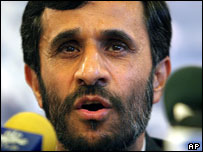
Mahmoud Ahmadinejad defends Iran's nuclear programme
|
Much of his support came from poorer and more religious sections of Iran's rapidly growing population, particularly outside Tehran. Promising an administration of "peace and moderation", he said his government would press on with Iran's controversial nuclear programme. His outspoken style and hard anti-Western line have often caused outrage abroad, most notably in 2005, when he called for Israel to be "wiped off the map" and described the Holocaust as a "myth". He denied implying a threat to Israel. Local elections in December 2006 - his first major test at the polls since coming to power - saw his allies trailing moderate conservatives and reformists. But parliamentary elections in March 2008 - in which many pro-reform candidates were disbarred from standing - saw a strong showing not only by the president's supporters but also by more pragmatic conservatives who oppose his confrontational style of dealing with western countries. In 2008, he faced mounting criticism of his handling of the economy, with hardship on the rise as a result of falling oil prices and the UN sanctions imposed in response to Iran's nuclear programme. However, predictions that the parlous state of the economy was likely to damage Mr Ahmadinejad's re-election chances were confounded when he appeared to win a landslide victory in presidential elections in June 2009. Born near Tehran in 1956, Mahmoud Ahmadinejad is a former provincial governor and Revolutionary Guards officer. He was actively involved in the Islamic revolution and was a founding member of the student union that took over the US embassy in Tehran in 1979. But he denies being one of the hostage-takers.
Media
The struggle for influence and power in Iran is played out in the media.
The relatively free press, a tangible achievement of former President Khatami's government, has been targeted by conservatives. Many pro-reform publications have been closed and reformist writers and editors jailed. The conservative judiciary has also campaigned against the liberal media. There are some 20 major national dailies, but few Iranians buy a newspaper every day. Sports titles are the biggest sellers. Broadcasters are more restricted than the press. Despite a ban on owning dishes, foreign satellite TV channels are widely watched; this is largely tolerated by the authorities. Stations operated by exiles in the US were said to have played a role in student protests in 2003. State-run Islamic Republic of Iran Broadcasting - IRIB - operates national and provincial networks. Its Jaam-e Jam international TV channels are available worldwide via satellite. IRIB targets Arabic speakers in Iraq and the Middle East via the Al-Alam and Al-Kawthar TV networks. It launched an English-language satellite station, Press TV, in 2007. President Ahmadinejad said its mission would be "to stand by the oppressed of the world". Television is very popular, with more than 80% of Iranians being regular viewers. The most-watched network is the third state channel, the youth channel. IRIB's radio channels include a parliamentary network and Radio Koran. The Voice of the Islamic Republic of Iran, an external radio service, broadcasts via shortwave and the internet.
 |
Iran online: Internet use has mushroomed
|
By early 2008 there were around 23 million internet users (InternetWorldStats). The web is the main forum for dissident voices. Access is easy to arrange and affordable for middle-class households. However, service providers are prevented from allowing access to sites deemed to be pornographic or anti-Islamic. News sites are becoming increasingly important in providing information and insight. They often have strong political leanings. There are tens of thousands of weblogs, with bloggers active both in Iran and among the diaspora. Officials, including President Ahmadinezhad, have launched blogs. Foreign broadcasters target audiences in Iran; they include the Washington-backed Radio Farda, a music-based station aimed at younger audiences. The press
Television
- IRIB - state-run, operates four national networks, provincial and international services
- Press TV - IRIB's English-language satellite channel
Radio
- IRIB - state-run, operates eight national networks, provincial services and an external service
News agencies
|


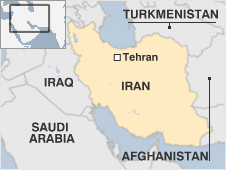
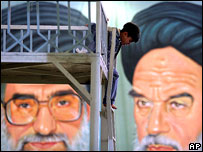
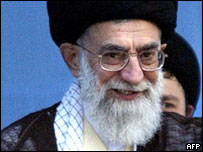

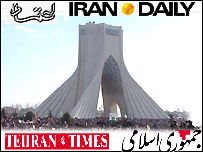
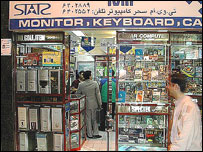




Bookmark with:
What are these?